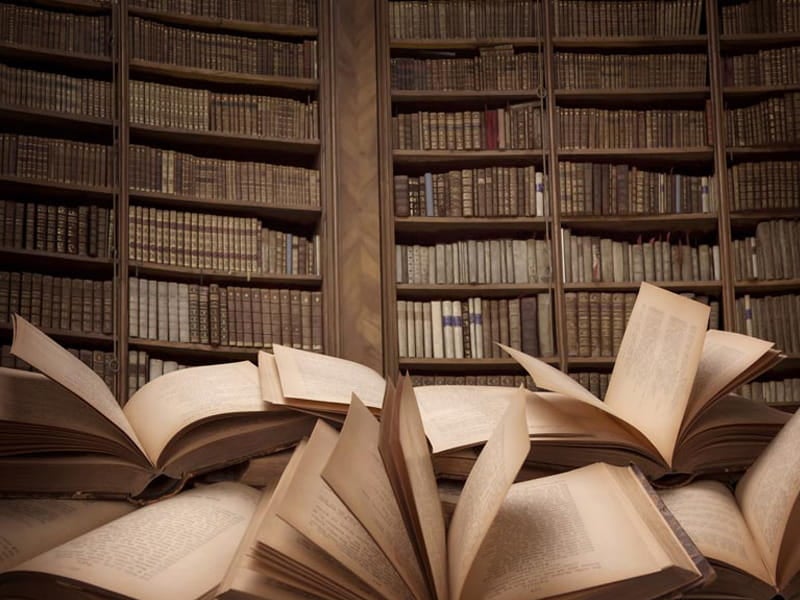By E. Michael Jones
Spence, 336 pp.
The phone rings and a young woman picks up. The killer is calling. "Who's there?" she asks. This scene, from countless horror movies, is so well known that in the 1996 movie "Scream," the killer, instead of simply telling her she's about to die, upbraids her for her ignorance: "Never say, 'Who's there,'" the killer says. "Don't you watch scary movies? It's a death wish. You might as well come out to investigate a strange noise or something."
Even deadlier than asking "Who's there?" in horror films is having sex outside of marriage. The rule "have sex and die" is so well-established that "Scream" got its biggest laugh when the innocent teen Randy tells his friends, "I never thought I'd be so happy to be a virgin."
What lies behind the connection between sexual transgression and death? As E. Michael Jones writes in his new book, "Monsters From the Id: The Rise of Horror in Fiction and Film," the monsters we encounter in horror are produced by our rejection of Christian morality, and our embrace of the Enlightenment's ethos of personal liberation, especially in sexual matters.
The central character in Jones' book is Mary Wollstonecraft Shelley, the creator of the first modern horror story: "Frankenstein." Horror, and the rules that govern the genre, are the product of her relationship with her lover and eventual husband, the poet Percy Shelley. At age 16, Mary ran away with the then-married poet. Over the next few years, Mary learned, through painful personal experience, the human toll exacted by the new ethos of liberation. In addition to the personal humiliation she endured--she was passed among Shelley's friends, and participated in a ménage a trois with her stepsister--Mary watched as Shelley's quest for sexual liberation led two women, including her own half-sister, to take their own lives.
Feeling remorseful and repulsed, Mary appeared to have two choices: She could embrace the new morality and set aside her misgivings and remorse. Or, she could repudiate this new morality and turn back to the Christian moral tradition that her parents and husband had rejected. Instead, Mary found a third way: the horror story. In "Frankenstein," Mary was able to express her revulsion at both her lover and the moral ethos he embodied. The horror story about the terrible consequences of one man's attempt to play God, and the monster he produced in the process, was a depiction of the parade of horribles that the Enlightenment's aspiration to replace the biblical God--especially His moral law--with one more to its liking, had unleashed upon the world. But instead of acknowledging guilt and error in a straightforward manner, the acknowledgement was expressed symbolically and unconsciously.
That's because, as Jones puts it, "horror involves both the result [of the Enlightenment's morality] and the inability to face the moral cause." According to Jones, this pattern has held up since Mary Shelley's time. Whether it's Bram Stoker's "Dracula," the 1950s classic "Forbidden Planet," Ridley Scott's "Alien," or more recently "Mimic," books and movies whose ostensible purpose was to scare us end up serving as indictments of the morality--in particular, the sexual morality--our culture has inherited from our Enlightenment forebears. It's why Randy in "Scream" is happy to be a virgin once Ghostface makes his appearance.
Even when the monster doesn't represent sexual transgression, you can still draw a straight line between the particular anxiety and the Enlightenment. Fear of nuclear war? Giant bugs? These anxieties have their origins in the Enlightenment's project to bring nature under human subjection. Our hubris leaves us afraid that we will destroy ourselves, or turn nature against us.
By the time Jones reaches the interwar period, the thought occurs that other influences might make their way into films. Even Jones' careful reading of "Dracula" and James Whale's "Frankenstein" movies left me uncertain whether these movies were representing a monster the filmmakers preferred not to name, or as in the case of Whale's films, a monster the director could readily name: the Nazis. But by the time Jones reaches the mid-1950s, he's back on his game again.
Jones' thesis shouldn't be all that surprising. Scholars and critics have acknowledged that horror is an artistic representation of our fears and anxieties. Jones' contribution is to tell readers that we are afraid and anxious because we know that out morality not only doesn't work, but it's also the source of evil and suffering. Since, like Mary Shelley, we can't or won't acknowledge that fact, the monster will be hear to stay, and investigating strange noises will remain a bad idea.

